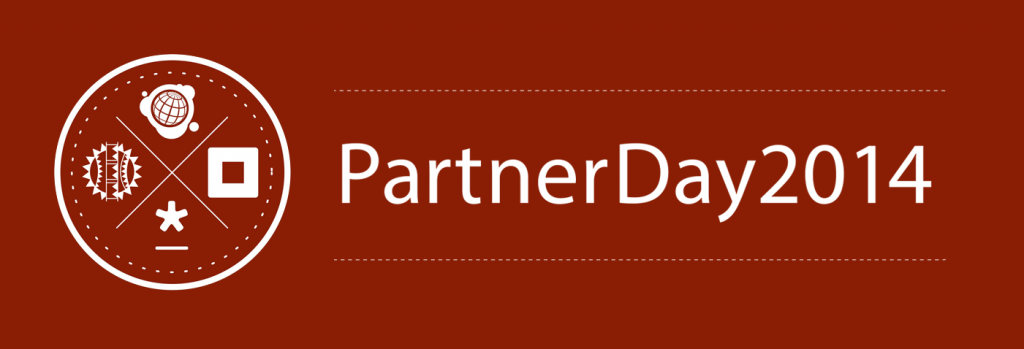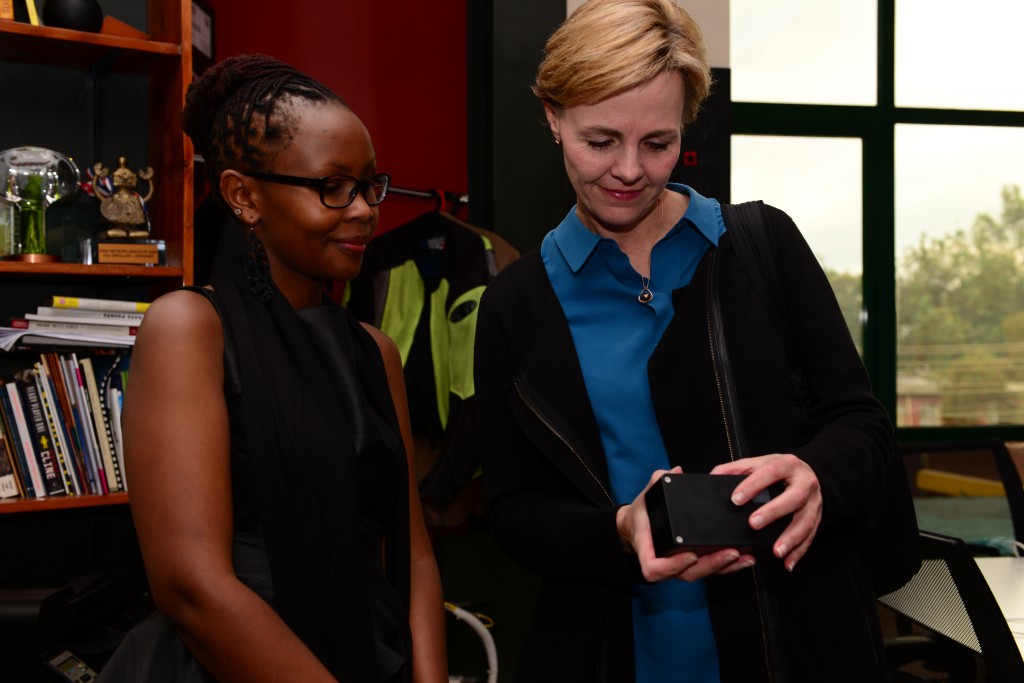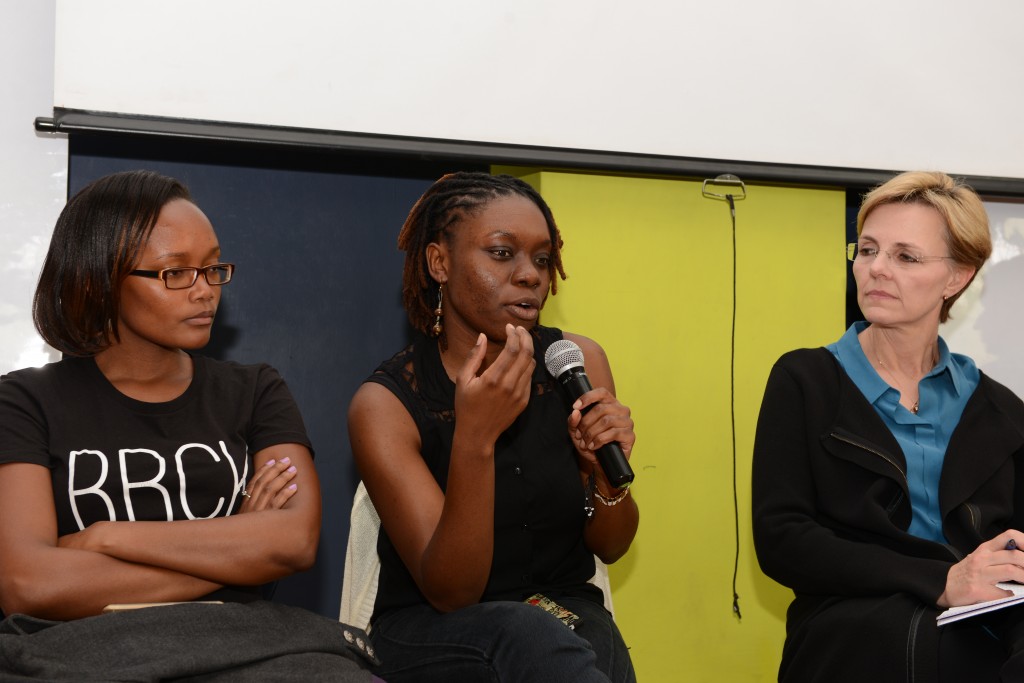
[This is the first post of a two-part series written by Arushi Jain, Betty Mutimba and Natasha Wissanji]
Let’s start with a cup of coffee. The partners, team leaders and other community members had convened once again for a day of discussions around past trends of the ecosystem, its current focusses and its future prospects.The second Partnership Day started off with a brief introduction by Pete. His story is rather romantic - a tiny kiosk that started at the iHub, Petes is now an established chain of cafes across Kenya.
A lot major themes were underlined, and they will be exposed in a two-piece blog. The day was divided up into multiple sessions, and the structure was to have a discussion where all parties could voice their observations, concerns and suggestions.
Starting off with Information Flow as Freedom and Opportunity, we discussed how the ecosystem stirs up collaborations between different groups of people, each with their own ideas and skill sets. This allows for a serendipity that draws them together to make novel solutions possible. Without this ecosystem, many of these solutions would not have become a reality. All three stakeholders encouraged each other to be part of the explosion.

In the session around Connectivity Creating Opportunity, Philip Walton enthusiastically spoke about the the impact of connectivity in Ed Tech, Med Tech, and Humanitarian Response. He pointed out the potential of BRCK, with the latest addition of an expansion port with which people can attach a Raspberry pi and physically integrate it with the BRCK to become one unit. It allows for the first time not only connectivity but also computation - a notion that was not previously conceivable. The ultra cool new name for this is the
BRCK and Mortar! BRCK is currently working on several education initiatives as well as on a water project in Uganda that measures ph levels of water tables.
Keeping true to the nature of work accomplished here, the conversations were centred around problem solving, and implementing dreams to become reality. When we spoke about Manufacturing and Hardware, and Dr Gachigi from Gearbox spoke about the amazing innovation that is currently underway despite the constraints facing the nascent hardware industry. Gearbox exists to provide a platform generic enough to serve several needs for anyone undertaking a hardware venture. It will provide hands on education in digital fabrication and business incubation. Examples of projects include speed governors for public service vehicle, sustainable sanitation - an initiative by Sanergy, and phone charging solutions.

Innovation is a big word. And it’s not something that just happens. Before you get to the point of innovation there has to exist a culture. And, not just any culture, but a culture of curiosity, learning, sharing, problem solving and most of all, community. This is the ethos on which Ushahidi, iHub and Akirachix communities are built on and what sparks from such serendipity is exactly that - innovation.
 [This is the first post of a two-part series written by Arushi Jain, Betty Mutimba and Natasha Wissanji]
Let’s start with a cup of coffee. The partners, team leaders and other community members had convened once again for a day of discussions around past trends of the ecosystem, its current focusses and its future prospects.The second Partnership Day started off with a brief introduction by Pete. His story is rather romantic - a tiny kiosk that started at the iHub, Petes is now an established chain of cafes across Kenya.
A lot major themes were underlined, and they will be exposed in a two-piece blog. The day was divided up into multiple sessions, and the structure was to have a discussion where all parties could voice their observations, concerns and suggestions.
Starting off with Information Flow as Freedom and Opportunity, we discussed how the ecosystem stirs up collaborations between different groups of people, each with their own ideas and skill sets. This allows for a serendipity that draws them together to make novel solutions possible. Without this ecosystem, many of these solutions would not have become a reality. All three stakeholders encouraged each other to be part of the explosion.
[This is the first post of a two-part series written by Arushi Jain, Betty Mutimba and Natasha Wissanji]
Let’s start with a cup of coffee. The partners, team leaders and other community members had convened once again for a day of discussions around past trends of the ecosystem, its current focusses and its future prospects.The second Partnership Day started off with a brief introduction by Pete. His story is rather romantic - a tiny kiosk that started at the iHub, Petes is now an established chain of cafes across Kenya.
A lot major themes were underlined, and they will be exposed in a two-piece blog. The day was divided up into multiple sessions, and the structure was to have a discussion where all parties could voice their observations, concerns and suggestions.
Starting off with Information Flow as Freedom and Opportunity, we discussed how the ecosystem stirs up collaborations between different groups of people, each with their own ideas and skill sets. This allows for a serendipity that draws them together to make novel solutions possible. Without this ecosystem, many of these solutions would not have become a reality. All three stakeholders encouraged each other to be part of the explosion.
 In the session around Connectivity Creating Opportunity, Philip Walton enthusiastically spoke about the the impact of connectivity in Ed Tech, Med Tech, and Humanitarian Response. He pointed out the potential of BRCK, with the latest addition of an expansion port with which people can attach a Raspberry pi and physically integrate it with the BRCK to become one unit. It allows for the first time not only connectivity but also computation - a notion that was not previously conceivable. The ultra cool new name for this is the BRCK and Mortar! BRCK is currently working on several education initiatives as well as on a water project in Uganda that measures ph levels of water tables.
Keeping true to the nature of work accomplished here, the conversations were centred around problem solving, and implementing dreams to become reality. When we spoke about Manufacturing and Hardware, and Dr Gachigi from Gearbox spoke about the amazing innovation that is currently underway despite the constraints facing the nascent hardware industry. Gearbox exists to provide a platform generic enough to serve several needs for anyone undertaking a hardware venture. It will provide hands on education in digital fabrication and business incubation. Examples of projects include speed governors for public service vehicle, sustainable sanitation - an initiative by Sanergy, and phone charging solutions.
In the session around Connectivity Creating Opportunity, Philip Walton enthusiastically spoke about the the impact of connectivity in Ed Tech, Med Tech, and Humanitarian Response. He pointed out the potential of BRCK, with the latest addition of an expansion port with which people can attach a Raspberry pi and physically integrate it with the BRCK to become one unit. It allows for the first time not only connectivity but also computation - a notion that was not previously conceivable. The ultra cool new name for this is the BRCK and Mortar! BRCK is currently working on several education initiatives as well as on a water project in Uganda that measures ph levels of water tables.
Keeping true to the nature of work accomplished here, the conversations were centred around problem solving, and implementing dreams to become reality. When we spoke about Manufacturing and Hardware, and Dr Gachigi from Gearbox spoke about the amazing innovation that is currently underway despite the constraints facing the nascent hardware industry. Gearbox exists to provide a platform generic enough to serve several needs for anyone undertaking a hardware venture. It will provide hands on education in digital fabrication and business incubation. Examples of projects include speed governors for public service vehicle, sustainable sanitation - an initiative by Sanergy, and phone charging solutions.
 Innovation is a big word. And it’s not something that just happens. Before you get to the point of innovation there has to exist a culture. And, not just any culture, but a culture of curiosity, learning, sharing, problem solving and most of all, community. This is the ethos on which Ushahidi, iHub and Akirachix communities are built on and what sparks from such serendipity is exactly that - innovation.
Innovation is a big word. And it’s not something that just happens. Before you get to the point of innovation there has to exist a culture. And, not just any culture, but a culture of curiosity, learning, sharing, problem solving and most of all, community. This is the ethos on which Ushahidi, iHub and Akirachix communities are built on and what sparks from such serendipity is exactly that - innovation.